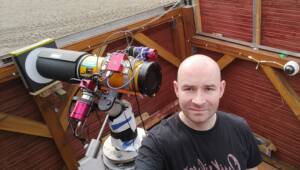
My experience with ZWO AM5 and AM5N mounts
By Rumen G.Bogdanovski, Software engineer, PhD in Astrophysics and astrophotographer Introduction I am an astrophysicist, software developer, and astrophotographer. My passion for astronomy dates back to my earliest memories. One














10 Comments
Patrick Jones
I have the asi224mc and the asiar. I was hoping to use them with my 8″ sct from meade but have been told i need other accesories to make it work. What else do you rcommend i get. Im thinking of getting the explore scientific ar102 refractor but will need accesories for that as well. Im on a budget so i was hoping to find the cheapest route and thought you might be able guide me in the right direction.
Katherine Tsai
You need a mount which support Goto.
Francesco
I usually work with a Maksutov Rumak 255mm F20 telescope and Asi 224MC for images of the solar system with his 3,75 micron pixels. Now I ask you if could be a good idea use the camera Asi 178 Mono (6,4 MP) for taken images of the Moon and planets through an IR Pass filter. It’s a problem use the Asi 178 Mono with his 2,4 micron pixels about the 5000mm of focal lenght (F20) on my telescope ? it will be a correct system ?
Thanks.
Francesco Badalotti
Katherine Tsai
You can use ASI178MM but I think ASI224 is more suitable for your telescope focal length.
Talha
What planetary camera would you recommend for C11 edge hd telescope having a focal length of 2800mm and f ratio of f/10?
Katherine Tsai
New camera ASI462MC would be a good choice. You can also simulate the FOV to see effect with this tool. http://astronomy.tools/calculators/field_of_view/
Claudio
hi, i have a mak 127 skywatcher (1500 focal lenght) telescope, which camera do you recommend?. Thanks
ZWO.Moson
There are two links for your reference: http://astronomy.tools/calculators/field_of_view/
https://astronomy.tools/calculators/ccd_suitability
Frank Feger
Hi!
Please exchange the shutter types of ASI178 and ASI174 – the former one has the standard rolling shutter and only the latter uses a global shutter.
Kind regards,
Frank
Support@ZWO
its sensor character